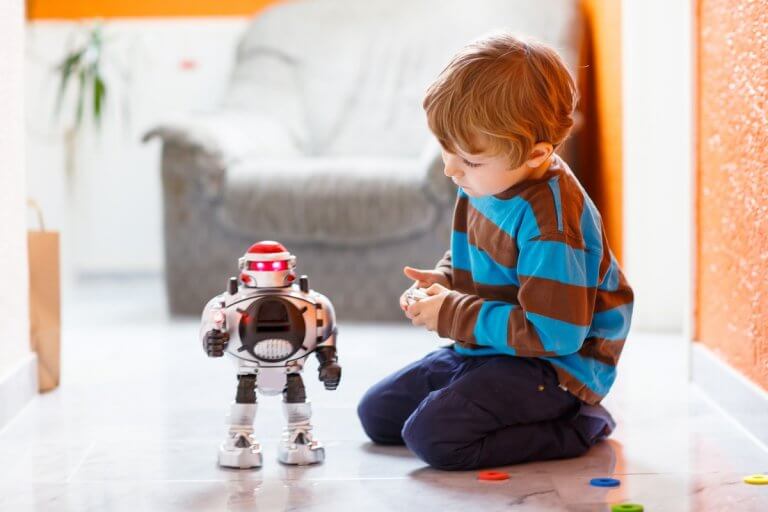
Artificial intelligence (AI) may sound like a novel concept to some, but what many may not realise is that it’s application is already firmly ingrained in daily life. Google Home, your ‘Discover Weekly’ on Spotify and smart email replies in Gmail are all examples of AI in our routines.
While AI is already making life easier for many people worldwide, what’s the status of its use in schools?
There’s a general agreement that AI is unlikely to replace teachers, but it can facilitate teaching and administrative tasks.
Last year’s report by the European Commission, The Impact of Artificial Intelligence on Learning, Teaching, and Education, notes: “AI could make some functions of education obsolete and emphasise others. It may also enable new ways of teaching and learning.”
While hype and scepticism can be expected with the introduction of any new technology, here are some examples of how AI can be used to help students and teachers in schools:
AI tutoring systems
IBM Watson Tutor in Discovery TV “This Is AI”https://t.co/aerYz8zRjv
— Lin Zhou (@LinZhou845) June 21, 2018
The use of AI tutoring systems involves engaging students in a conversation and providing feedback in areas they need help with. One such example is the Watson Tutor by IBM.
The Watson Tutor is an intelligent tutoring system that engages in personalised conversations with students, giving feedback to educators to help them understand where or what they should focus on with each student.
Such tutoring systems can have far reaching impacts in improving the overall quality of teaching and academic attainment of students in the classroom.
Improving students’ comprehension and access to materials
Microsoft’s Presentation Translator translates presentations in real time https://t.co/MN3Y3Eh1T8 by @fredericl #MSBuild
— TechCrunch (@TechCrunch) May 10, 2017
What happens when a teacher is leading a diverse student body where some students do not speak the spoken language in the classroom, such as English, fluently? As with most things in the modern world, there’s now a plugin to help with that.
According to Microsoft, Presentation Translator “is a free plugin for PowerPoint that creates real-time subtitles of what the teacher is saying, displaying them below the presentation.”
It provides live transcripts of a teacher’s lectures in several languages, including English, and enables deaf or hard of hearing students and language learners to follow and participate in group discussions using gadgets such as a personal computer, laptop, tablet or smartphone.
This makes education more inclusive, and enables students who are unable to attend school (e.g. due to an illness) or who require learning at a different level, or who wish to master a particular subject that isn’t available in school, writes Bernard Marr for Forbes.
Enhance learning outcomes outside the classroom
More MATHia in the news! Honored to have such great customers who appreciate the #AI powered engine behind MATHia!#math #learning #software #edtech @carnegielearn #longlivemath https://t.co/eMKQjNkYlD
— Jamie Sterling Product (@ProductSterling) April 29, 2019
What happens when a student struggles in class, especially in an anxiety-inducing subject like maths? School teachers may be crunched for time in the classroom, which means students can benefit from extra support outside the classroom.
This makes tools such MATHiaU by Carnegie Learning beneficial for students.
MATHiaU was designed to deliver a better and more efficient learning experience to every developmental math student. Its website states that “MATHiaU takes math beyond memorising and performing. It coaches students until they learn the math”.
It helps students understand maths and its connection to the real world, offering step-by-step examples while guiding students through each step of a sample problem, describing it as a teacher might in class. MATHiaU then re-phrases questions, redirects the student and hones in on the parts of the problem that prove most difficult.
Writing and plagiarism tools
Plagiarism detected with Grammarly. No excuse for it in 2019 with all the tools for checking this plus fans familiar with the source material. pic.twitter.com/DRnXLcxnOE
— Kxmode (@kxmode1) May 8, 2019
Scarily enough, AI is already being used to produce written content, but not (yet) to the extent of human ability.
While there’s a long way to go before AI will be able to generate more complicated articles without the help of humans in the future, AI has already proven useful as an online editor and plagiarism checker. For example, Grammarly acts as an online editor that not only corrects grammar, but also offers suggestions for sentences and plagiarism checks.
When used responsibly, this tool can act as a useful way for students to learn to craft better sentences in school and beyond.
Liked this? Then you’ll love…
Why teachers will never be replaced by robots
The robots are coming: Here’s how AI is being used in the K12 classroom







